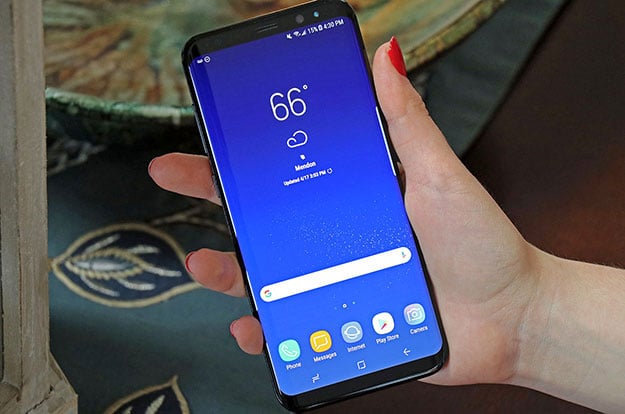Samsung Galaxy S10 Leak Claims Snapdragon 855 And 2Gbps X24 Modem Dynamic Duo

We are still waiting for Samsung to officially launch its Galaxy S9 and Galaxy S9 Plus handsets, but be that as it may, there is already chatter about what comes after in the company's flagship smartphone space. The Galaxy S10 rumors have begun in earnest, and word around the online water cooler is that it will wield a Qualcomm Snapdragon 855 SoC (system-on-chip) with a speedy Snapdragon X24 LTE modem.
There is not a whole lot to go on at this early stage. However, a Twitter post by Roland Quandt, an active leaker (or "finder," as he prefers) of unreleased mobile devices claims that Qualcomm's contractors have been chirping about the Snapdragon 855 (SDM855). Assuming the leaked (found) information is accurate, the Snapdragon 855 will be built on a 7-nanometer manufacturing process.
Qualcomm won't say it, but their contractors do. Snapdragon 855 (SDM855) is the first 7nm SoC. (probably the one the X24 modem ends up in) pic.twitter.com/Ot1J34fQoG
— Roland Quandt (@rquandt) February 15, 2018
Another interesting tidbit is that back in December, it was rumored Qualcomm selected TSMC to produce the Snapdragon 855, rather than Samsung. It was also said that TSMC's 7nm process techology would be used to build the successor to Apple's A11 Bionic processor used in the iPhone 8, iPhone 8 Plus, and iPhone X.
As for the Snapdragon X24 LTE modem, that part already exists, and incidentally it's built on a 7nm FinFET process. It's the first LTE modem to support a theoretical maximum download speed of 2 gigabits per second (Gbps), up from the previous generation Snapdragon X20's top speed of 1.2Gbps. It also supports 7x carrier aggregation (downlink) and 4x4 MIMO (with up to five aggregated LTE carriers).

